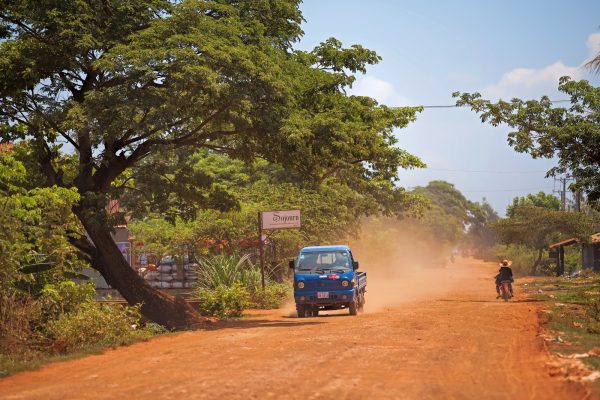Pacific Money | Economy | Southeast Asia
The rise in non-performing loans only hints at the heavy burden of debt borne by tens of thousands of rural Cambodians.
A forecast increase in microfinance non-performing loans (NPL) ratios in Cambodia is set to remove a key prop of the industry case for the defense.
Explosive growth means that as of March 2023, Cambodia’s microloan portfolio had risen to more than $16 billion, nearly half of the country’s GDP. The tendency of microfinance NPLs to increase amid fast growth in lending is well known to economists. Back in the 1990s, the late World Bank economist J. D. Von Pischke argued that low NPL rates are often based on earlier, smaller portfolio sizes with less risky borrowers. As lending increases, the cumulative proportion of risky loans and NPLs mechanically increases as a proportion of the portfolio.
Microfinance lenders everywhere have an in-built incentive to obscure or under-report NPLs. Such problem loans make new investment harder to attract, and public knowledge of write-offs creates an incentive to refuse to pay. ACLEDA, one of Cambodia’s largest microfinance lenders, reported an NPL ratio of 2.9 percent in 2022. A separate category before a loan is classed as an NPL is called “special mention.” Such loans at ACLEDA more than doubled to $60 million in 2022. The bank doesn’t break down the “cohorts” or “tranches” showing when the NPLs were made which, as Von Pischke argued back in the 1990s, would give more clarity.
None of the three economists who I contacted doubted that Cambodian NPL ratios are likely to rise. “We expect NPLs to increase for the entire finance sector in 2023, including microfinance institutions,” driven by the economic slowdown, said Stephen Higgins, managing partner of Mekong Strategic Capital in Cambodia. “This reflects what we are seeing in Credit Bureau arrears data, which provides a pretty accurate picture.”
Forbearance measures by the Cambodian authorities during the COVID-19 pandemic allowed the NPL ratio to be contained, says Eve Barré, an economist with French credit insurer Coface in Singapore. The current level of NPLs “may be underestimated, partly because performing restructured loans during the forbearance period have been allowed to maintain their classification.” There is a “considerable risk” of a higher NPL ratio in the dollarized Southeast Asian economy amid rising U.S. interest rates, Barré added.
Data collated from 2022 annual reports at Cambodian MFIs and microfinance-oriented banks by the M-CRIL consultancy and provided by CEO Sanjay Sinha finds that loans deemed “at risk” have increased by between 150 percent and 300 percent since 2021. M-CRIL, based in India, has completed a study on microfinance impact commissioned by the Cambodia Microfinance Association, which has yet to be published.
The impact on households of excessive debt levels is shown in research published by Equitable Cambodia and LICADHO last month. The research was based on surveys of 717 households in Kampong Speu, which between them have taken 1,745 loans over the last 10 years. More than two-thirds of all borrowers considered that their households had too much debt, with 27.3 percent of respondents spending more than 70 percent of their monthly income on debt repayments.
The only legal way for a lender to collect collateral is through the Cambodian courts, but only 3.2 percent of respondents thought that this would happen in the event of a foreclosure. Most borrowers believed their land would be seized either by local authorities (40.7 percent), or credit officers (32.5 percent). This confirms earlier findings from researchers including W. Nathan Green that most microfinance loan cases are too expensive to take to Cambodia’s courts, meaning that borrowers must effectively negotiate with local authorities without due legal process. Village chiefs call the shots. Credit officers get much of their price information from the chiefs, who sign off on land transactions and report the prices which are then used for tax collection.
More than 92 percent of the survey respondents had to provide at least one land title as collateral for a microloan, and 6.1 percent of households had sold land at least to meet repayments. Child labor is a direct consequence of excess debt: 3 percent of households had at least one child drop out of school due to micro-loans, and 51 children under 18 were found to be working to help their families make repayments.
By 2022, “borrowing to repay” had become the single most common reason for taking a new loan, accounting for 35 percent of new loans taken. “Any investor who remains skeptical of widespread and serious human rights abuses in Cambodia’s microfinance sector in 2023 is wilfully ignoring the evidence,” the report says.


